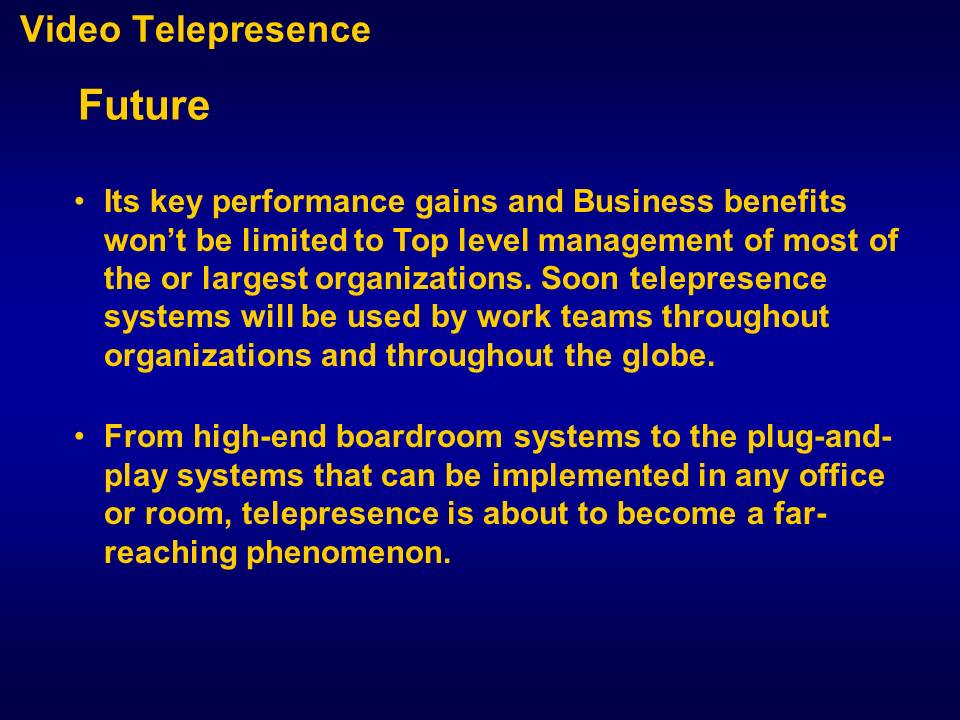Concept
- Video Telepresence, a vivid, real-to-life experience based on high definition (HD) video communications;
- Considered as modified Video Conferenceing Method;
- Provides visual conferencing environments, involving live human factors of participants;
- Creates a Realistic In-Person experience;
- Achieved wide acceptance, great customer satisfaction.

Background
Video Telepresence developed to overcome the following problems addressed by Traditional videoconferencing (VC):
- Various complaints received about the relative low quality of audio and video of VC.
- VC was usually distracted by the graininess or jerkiness of the visual image.
- Lots of difficulties associated with using and managing VC systems.
- Hence some organizations embraced high-end telepresence into their boardrooms with great success – reducing travel for top. executives, while increasing their ability to communicate effectively with other top executives.
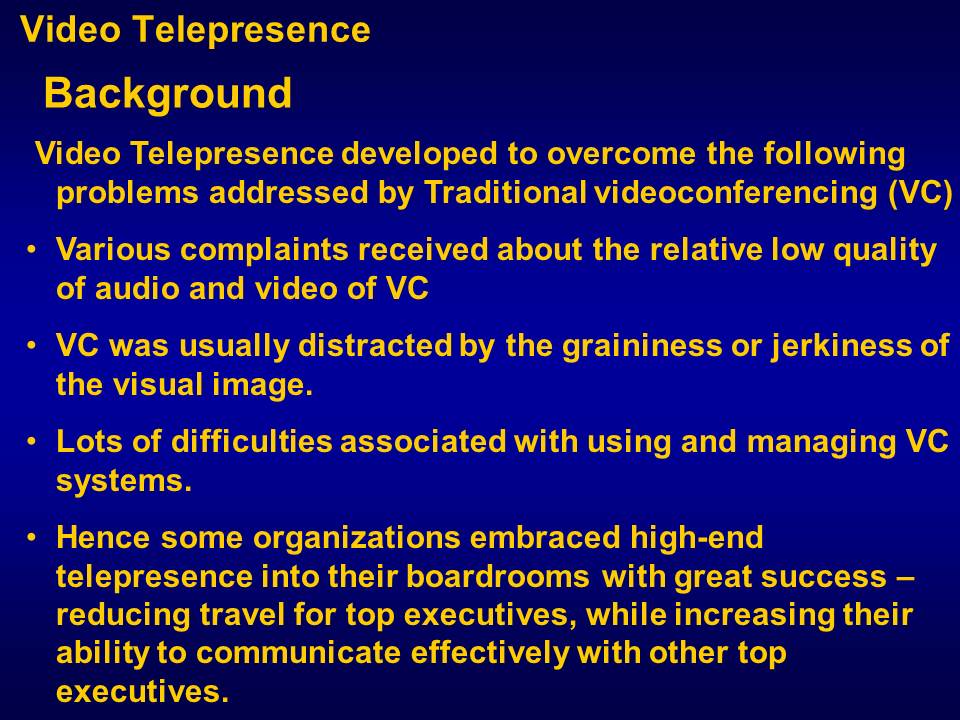
Components
- Life-size participants;
- Fluid motion;
- Accurate flesh tones;
- Studio quality high definition video, lighting and acoustics;
- True eye contact, or the approximation of eye contact in group settings;
- Immersive and/or mirrored environments generate a feeling of being in the same physical space;
- A consistency-of-quality between disparate locations.
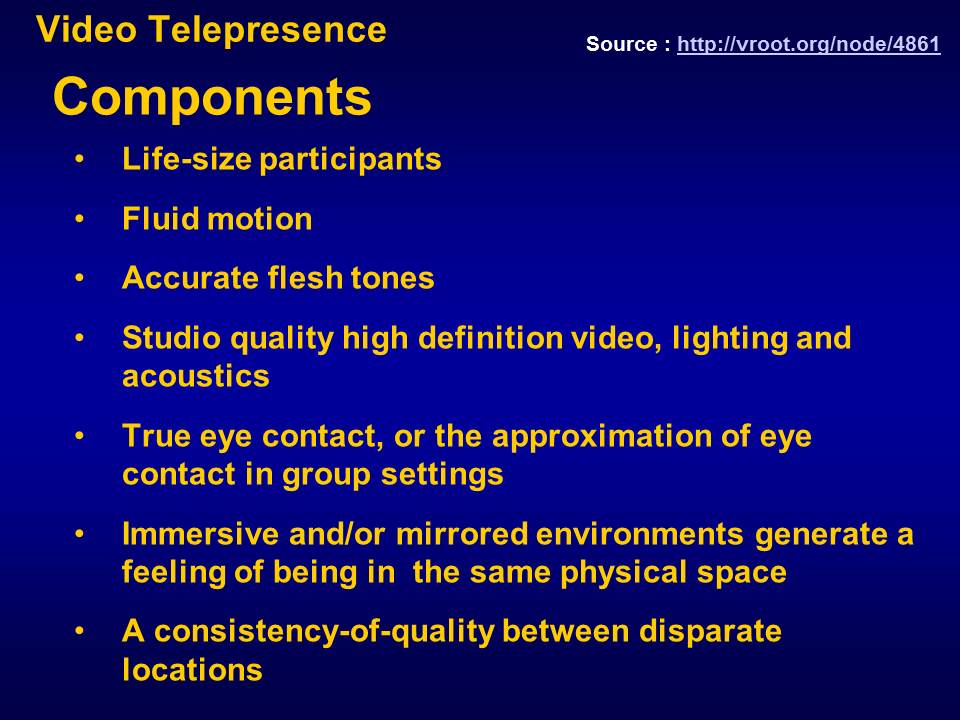
Telepresence Conferencing Systems – Categories
Continuous Presence Group Systems:
- Suitable to seat four to eight primary participants.
Telepresence Distance Learning Classrooms:
- Accommodating from 18 to 36+ participants in an effective manner for classroom instruction, distance learning solutions, both in educational and corporate training.
Small Group Telepresence Systems:
- Small group systems are less costly, accomodate less participants, can be mobile and “one-to-three” or “one-to-four” person solutions.
Specialty Telepresence Solutions and Environments:
- Includes advanced technology utility like 3D Visualization platforms, being used in various areas like theatrical and corporate events, medical and engineering studies, virtual banking and retail services, etc. for example Polycom Telepresence Experience (TPX).
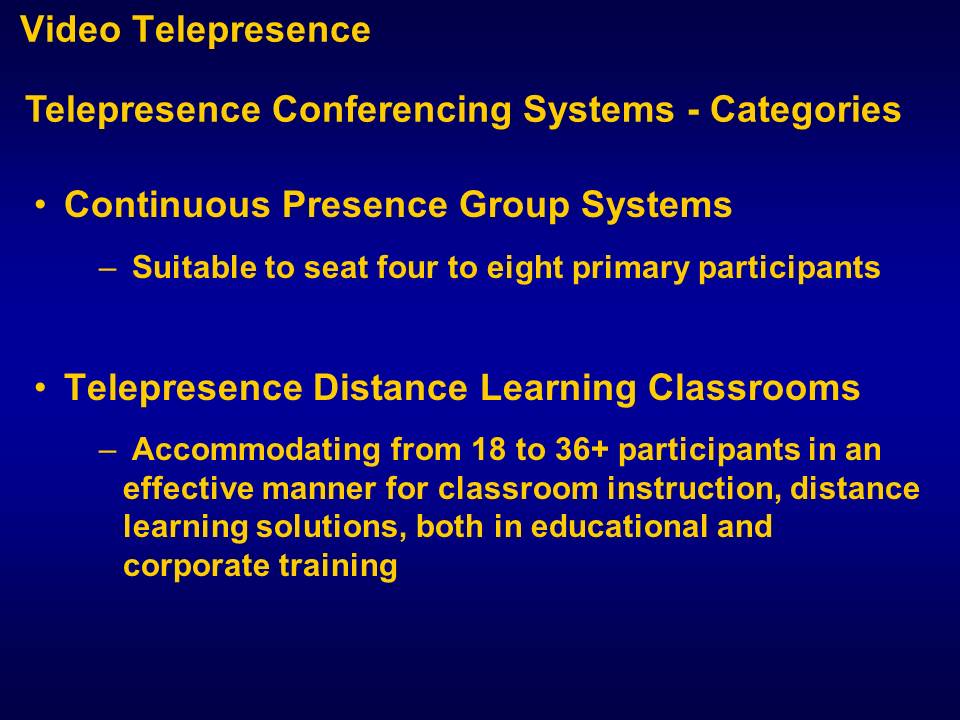
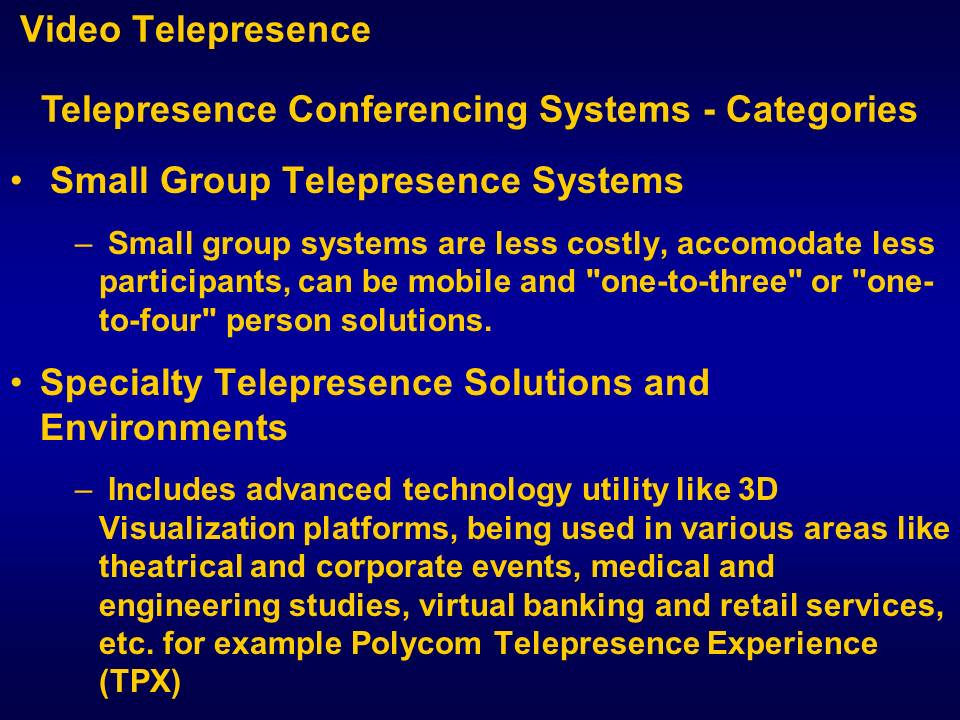
Telepresence Conferencing Systems – Cost Estimation
- The base cost of a telepresence group system can be from $35,000 to $350,000+.
- The Cisco TelePresence 1000 is used for small group meetings and one-on-one conversations, as well as emerging applications like the “virtual assistant.” Prices start at $79,000 per endpoint.
- The Cisco TelePresence 3000 is developed for meetings with up to six participants at each location. Prices start at $299,000 per endpoint.
- The TelePresence 3000 solution accommodates six participants per room (12 per table). Pricing is competitive against HP’s Halo (six participants at $425,000 per room) and the Polycom RPX204 for four participants ($249,000 per room).
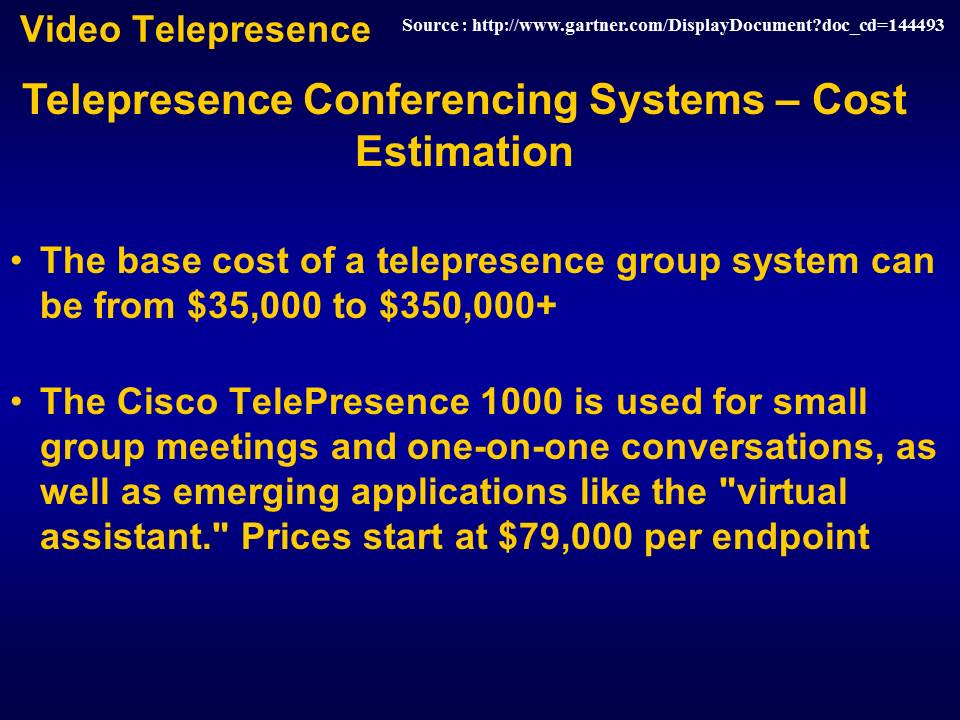
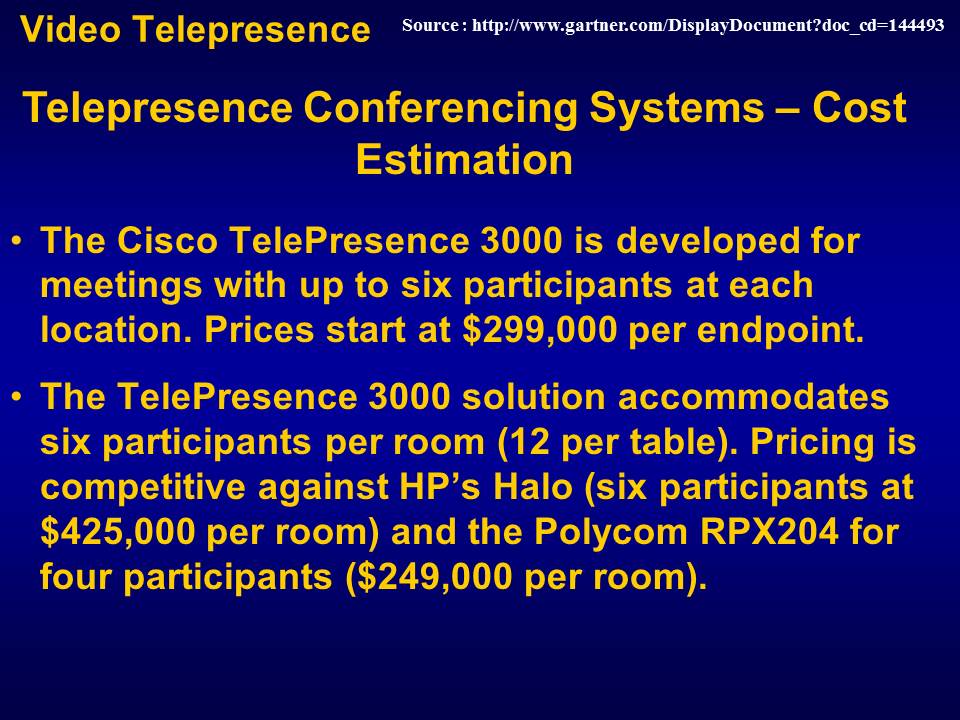
Telepresence Performance Matrix
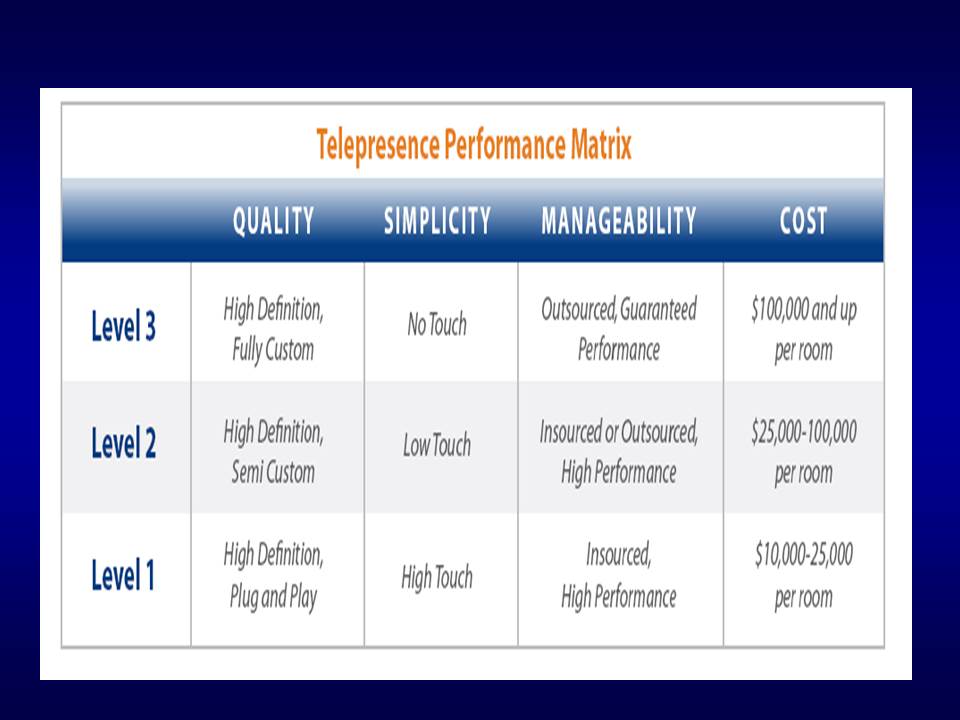
Managed Services – End-to-End & Service/Support
Managed Services provide access to 24×7 reservations, help desk, and video infrastructure which breaks the costs down into two components:
- Upfront Costs: End-to-end providers like HP Halo and Polycom operate the systems including: the electronics, furniture, lighting, acoustical treatments, etc., a site survey for each location prior to installation, and the on-site installation of the system. use Microsoft Outlook or Lotus Notes for scheduling the rooms.
- Recurring Costs: an IP overlay network, a telepresence CoIN connection, 24x7x365 concierge, help desk and reservation services, and/or on-site equipment maintenance. to pay for rack space and bandwidth.
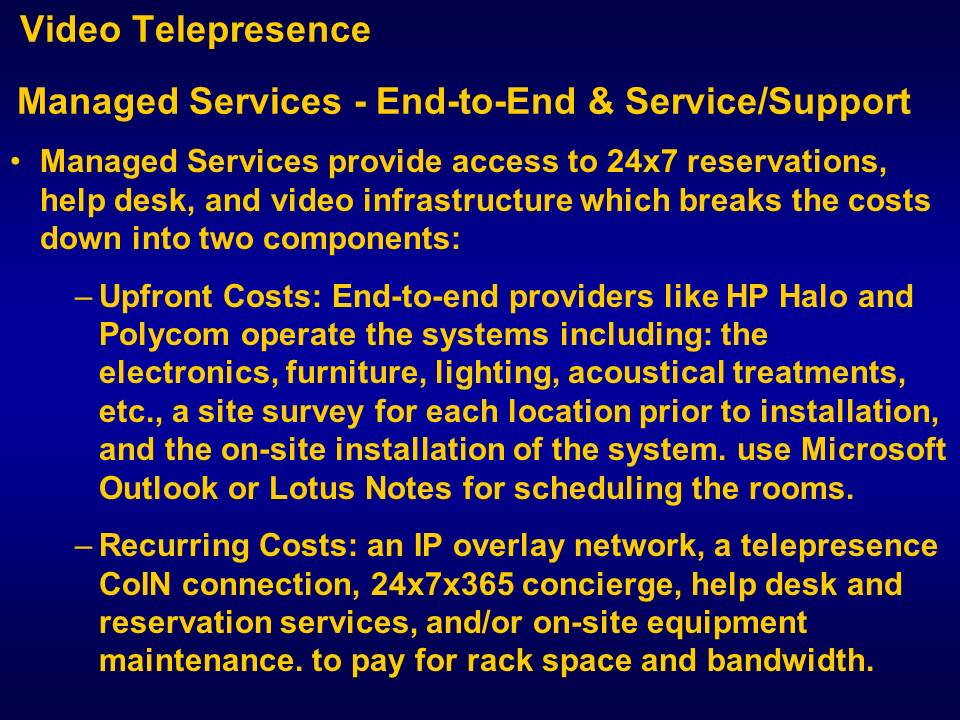
Inter-Company Business Strategy
Many telepresence systems can be deployed on Telepresence Community of Interest Networks (CoINs), an overlay network that can connect your telepresence sites to other telepresence or videoconferencing sites on the CoIN. Organizations can also build extranet connections to partners and/or work with firms like Abovetel and IP-V Gateways that specialize in connecting IP communications applications on disparate networks.
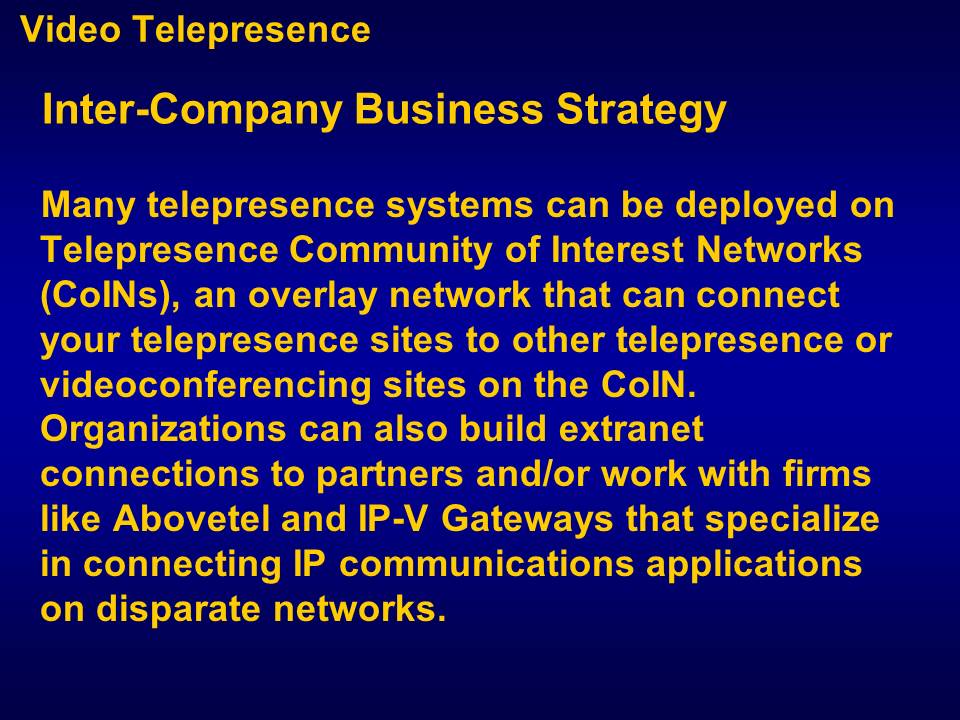
Acquisition / Deployment / Installation
Understanding what types of telepresence systems to deploy, how many versions of each per location, understanding time lines, hidden costs, and necessary make-ready for installation.

Future
Its key performance gains and Business benefits won’t be limited to Top level management of most of the or largest organizations. Soon telepresence systems will be used by work teams throughout organizations and throughout the globe.
From high-end boardroom systems to the plug-and-play systems that can be implemented in any office or room, telepresence is about to become a far-reaching phenomenon.
